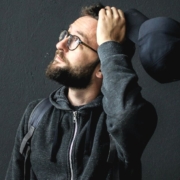Is Friendship Built on Common Interest, or Common Gripes?
By: Laura Bennett
‘Isn’t It Nice We Both Hate the Same Things’ explores how we build, and rebuild, friendships with others later in life.
Sustaining meaningful friendships in adult life can feel like a pipedream: people have work, family commitments and less energy to be always available for spontaneous catch-ups.
We know we need connection though, so how to do friendship as adults?
Following on from her debut novel Perfect-ish, author Jessica Seaborn’s new book Isn’t it Nice We Both Hate the Same Things delves into how we build, and rebuild, friendships with others later in life.
“I knew I wanted to explore adult friendship, specifically making new friends as an adult,” Jessica said.
“That was the starting point of the book [because] I just related to it.”
Jessica moved to Sydney at 21, knowing only two people.
“They left soon after,” Jessica said.
“It took a really long time to make any kind of friends.”
That experience of loneliness stayed with Jessica and resurfaced during the pandemic. Emerging in her thirties, she realised she was craving more than the daily routines of work and home.
“I have a small pool of quality people and that’s great but I needed to be more intentional,” Jessica said.
It’s a sentiment many adults share. Research shows that while strong friendships are essential for well-being, adults often struggle to form and maintain them. A 2023 YouGov survey found that nearly one in five adults reported having no close friends, and psychologists suggest that time constraints, vulnerability, and life transitions (like moving, marriage, or parenthood) make friendships harder to build after our twenties.
“You have to be vulnerable to reach out,” Jessica said.
“It feels a little bit like dating – especially when you’re meeting new people.
“You’re putting yourself out there.”
To reconnect, she joined running groups, reached out to former colleagues, and even experimented with Bumble BFF.
“That really felt like dating,” Jessica said.
Still, she found moments of real connection.
“For me, great friendships [where there’s] quality over quantity can make me happy,” Jessica said.
She also began to notice patterns in how friendships evolve – or don’t.
“If I’m always the one reaching out, that friendship may not last,” Jessica said.
“I’ve learned to ask, would this person be there for me if I needed them?”
Those questions about reciprocity, effort, and vulnerability are woven through Isn’t it Nice We Both Hate the Same Things which follows the character Charlie as she navigates guilt, grief, and the quiet ache of disconnection. Like Charlie, Jessica is interested in what happens when we reach out, and what we risk when we don’t.
“There’s no shame in wanting connection,” Jessica said.
“And someone else probably needs it too.”
Article supplied with thanks to Hope Media.
Feature image: Supplied





